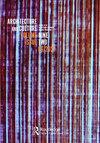二次虚拟,投影几何的变形
IF 1.8
0 ARCHITECTURE
引用次数: 0
摘要
摘要使用二元对立来构建关于他者的理论是很有诱惑力的。拉康的精神分析通过强调波罗密结的几何形状来避免这种情况,波罗密结三个环同时体现了顺序性和自我交叉性。本文围绕“二次虚拟”组织了拉康的拓扑选择,方法是:(1)考虑Mladen Dolar对变形的扩展描述,(2)将建筑空隙与投影几何浸入的标准图形——Möbius带、十字帽和Klein瓶——的非封闭问题联系起来,以及(3)采用Pappus定理,投影几何的起源,到神秘的扭曲和折叠空间,unheimlich(“unhomey”)直接暗示建筑是拓扑变换的机构。切斯特顿的《酷儿的脚》(1911年)和1951年的科幻电影《地球静止的那一天》这两个例子证明了帕普斯的二次虚拟性思想与拉康的他者和“灭绝”的相关性的持续相关性。本文章由计算机程序翻译,如有差异,请以英文原文为准。
Secondary Virtuality, the Anamorphosis of Projective Geometry
Abstract It is tempting to construct theory about the Other using binary oppositions. Lacanian psychoanalysis avoids this by stressing the geometry of the Borromeo knot, whose three rings embody both sequentiality and self-intersection. This essay organizes Lacan’s topological options around a “secondary virtuality” by (1) considering Mladen Dolar’s expanded account of anamorphosis, (2) connecting the architectural void to the problem of non-enclosure of the standard figures of projective geometry immersion – the Möbius band, cross-cap, and Klein bottle - and (3) taking Pappus’s theorem, the origin of projective geometry, to the twisted and folded spaces of the uncanny, where unheimlich (“un-homely”) directly implicates architecture as an agency of topological transformation. Two examples, Chesterton’s “The Queer Feet” (1911) and the 1951 science-fiction film, The Day the Earth Stood Still, demonstrate the continued relevance of Pappus’s idea of secondary virtuality to Lacan’s correlation of the Other and ‘extimacy’.
求助全文
通过发布文献求助,成功后即可免费获取论文全文。
去求助
来源期刊

Architecture and Culture
ARCHITECTURE-
CiteScore
0.80
自引率
0.00%
发文量
25
期刊介绍:
Architecture and Culture, the international award winning, peer-reviewed journal of the Architectural Humanities Research Association, investigates the relationship between architecture and the culture that shapes and is shaped by it. Whether culture is understood extensively, as shared experience of everyday life, or in terms of the rules and habits of different disciplinary practices, Architecture and Culture asks how architecture participates in and engages with it – and how both culture and architecture might be reciprocally transformed. Architecture and Culture publishes exploratory research that is purposively imaginative, rigorously speculative, visually and verbally stimulating. From architects, artists and urban designers, film-makers, animators and poets, from historians of culture and architecture, from geographers, anthropologists and other social scientists, from thinkers and writers of all kinds, established and new, it solicits essays, critical reviews, interviews, fictional narratives in both images and words, art and building projects, and design hypotheses. Architecture and Culture aims to promote a conversation between all those who are curious about what architecture might be and what it can do.
 求助内容:
求助内容: 应助结果提醒方式:
应助结果提醒方式:


